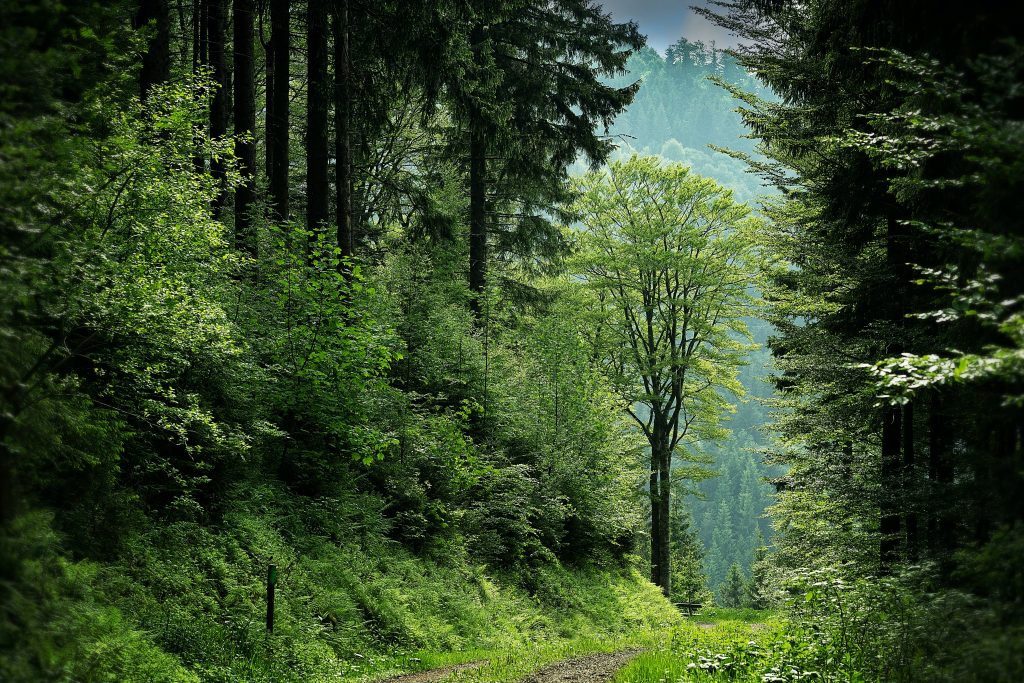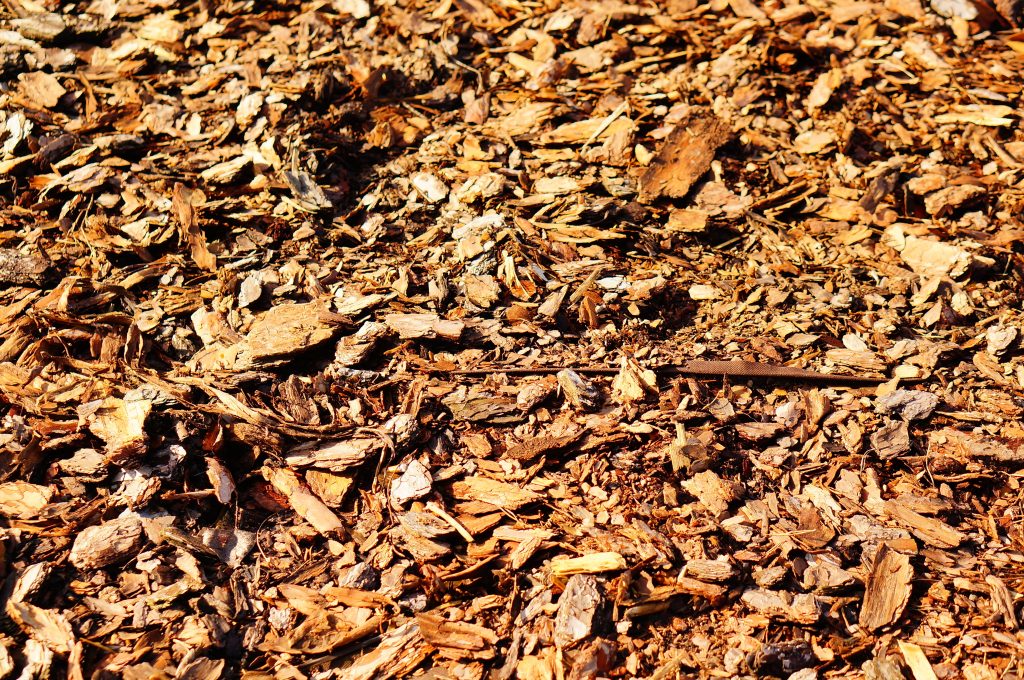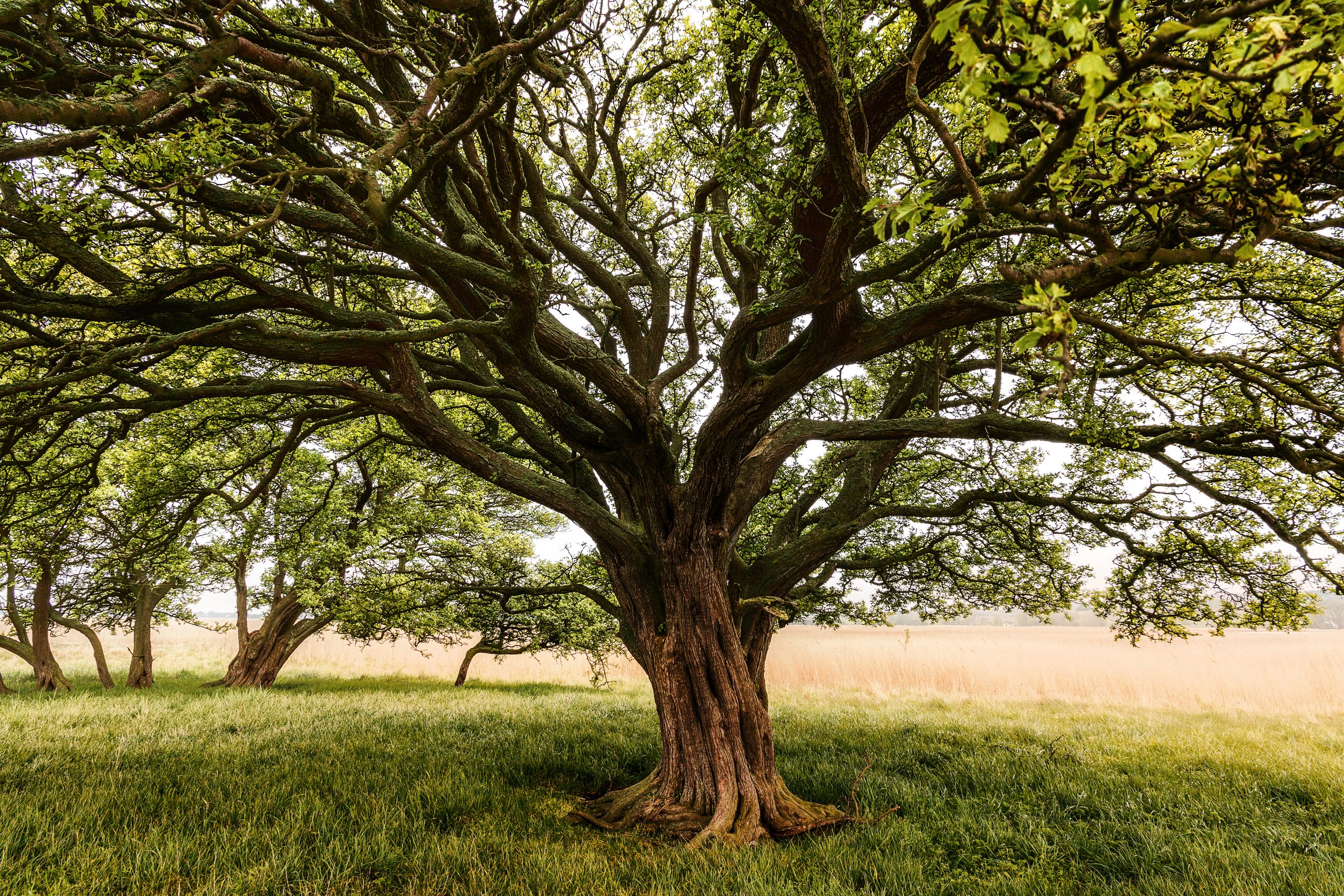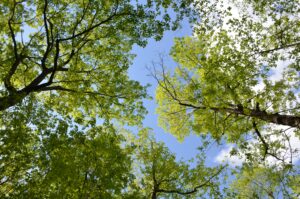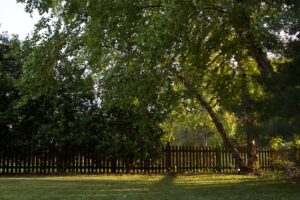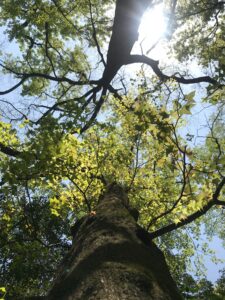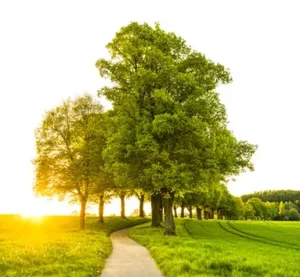What Is the Average Cost of Removal for a Downed Tree?
What Is the Average Cost of Removal for a Downed Tree
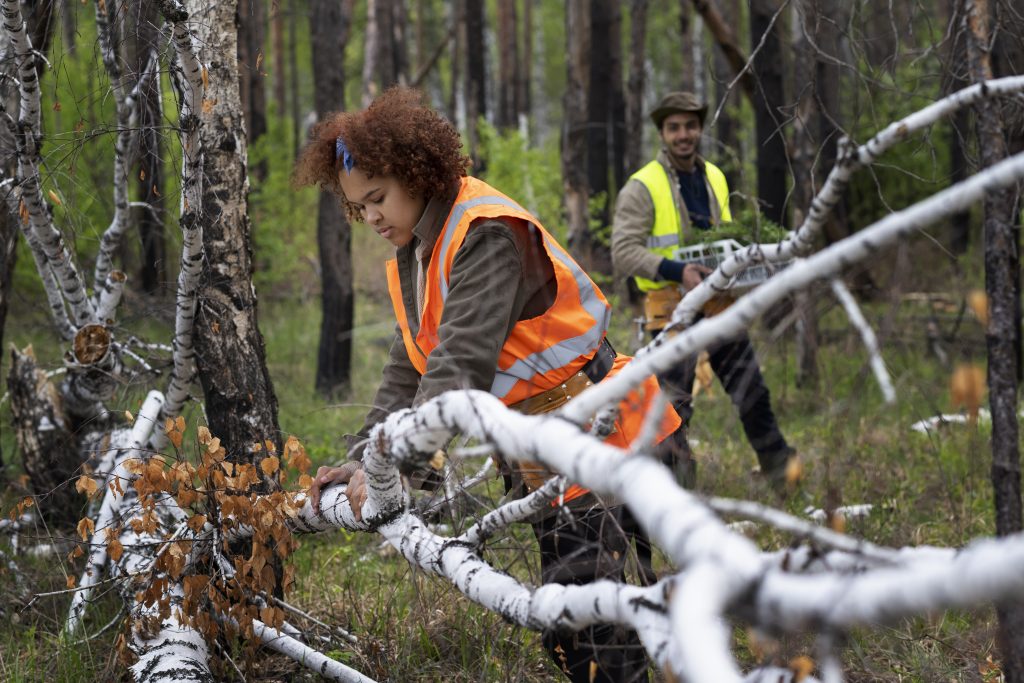
Are you curious about the average cost of removing a downed tree? Well, you’ve come to the right place! In this article, we’ll delve into the world of tree removal costs and provide you with all the information you need. From the history of tree removal to essential tips and factors that affect the cost, we’ve got you covered. So, sit back, relax, and let us guide you through the process of safely and efficiently removing a downed tree.
Key Takeaways
- The average cost of removal for a downed tree can be influenced by factors such as the size of the tree, its location and accessibility, and the complexity of the job.
- Underestimating the size of the tree can also affect the cost of removal.
- Over the years, there have been advancements in tree removal techniques, including the evolution of techniques and improvements in technology and equipment.
- When hiring a professional tree removal service, it is important to consider factors that can affect the cost, decide between DIY and professional services, and carefully choose a reputable company based on traits and factors such as experience and reputation.
Introduction to Tree Removal Costs
The average cost of removal for a downed tree can vary depending on factors such as size, location, and accessibility. When it comes to tree removal, it is essential to consider hiring professional tree removal companies, as they have the expertise and equipment to safely and efficiently remove the tree. They will assess the size of the tree, its location, and the accessibility of the area to determine the cost of removal.
Here are some key points to help you better understand the average cost analysis of tree removal:
- Tree size:
- Larger trees require more manpower, equipment, and time to remove, resulting in a higher cost.
- Smaller trees are generally easier and quicker to remove, leading to a lower cost.
- Location and accessibility:
- Trees located near buildings, power lines, or other obstacles may require additional precautions and specialized equipment, increasing the cost.
- Easy access to the tree, such as being close to a driveway or a clear path, can lower the cost of removal.
Understanding these factors will give you a better idea of the average cost analysis for tree removal. Now, let’s delve into the intriguing history of tree removal without skipping a beat.
Tree Removal History
Don’t overlook the importance of understanding the history of tree removal. Knowing the evolution of tree removal techniques and equipment can provide valuable insight into the modern practices used today. Tree removal has come a long way from the days of manual labor and basic tools. In the past, tree removal involved the use of axes, saws, and ropes to cut down and remove trees. This process was time-consuming and physically demanding. However, with advancements in technology, tree removal techniques have become more efficient and safer.
Today, professionals utilize a variety of tools and equipment to facilitate tree removal. Chainsaws are commonly used to cut down trees, while ropes and harnesses ensure the safety of workers when working at heights. In some cases, cranes and specialized machinery are employed to safely remove large trees or trees in confined spaces. Additionally, wood chippers and stump grinders are used to dispose of tree debris and grind stumps into mulch.
Understanding the history of tree removal techniques and equipment can help you appreciate the advancements made in the industry. By staying informed about the latest tools and methods, you can ensure that your tree removal project is completed efficiently and effectively. Now, let’s move on to some tips for hiring a professional tree removal service.
Tips
When it comes to tree removal, there are several factors that can affect the cost. Factors such as the size and location of the tree, the complexity of the job, and any additional services required, can all impact the overall price. While some homeowners may consider a DIY approach to save money, it’s important to weigh the risks and potential damage that can occur without the expertise of professional services. On average, the industry pricing for tree removal ranges from $500 to $1500, but it’s always recommended to get quotes from multiple companies to ensure you’re getting the best deal.
Factors Affecting Removal Cost
One of the factors that affects the cost of removing a downed tree is its size. Larger trees require more time and manpower to safely remove, which can increase the overall cost. Other factors that can influence the cost include the location of the tree, accessibility, and the complexity of the job. For example, if the tree is close to a building or power lines, special equipment or techniques may be required, leading to a higher cost. Common mistakes that homeowners make when it comes to tree removal include underestimating the size of the tree and attempting to remove it themselves without the proper knowledge or equipment. This can result in property damage, personal injury, or even death. Transitioning to the subsequent section about ‘diy vs professional services’, it is important to consider these factors before deciding whether to tackle tree removal on your own or hire a professional.
DIY Vs Professional Services
It’s important to weigh the pros and cons of DIY tree removal versus hiring a professional service. While tackling the task yourself may seem cost-effective, there are several factors to consider. Firstly, DIY tree removal requires specialized equipment that can be expensive to rent or purchase. Additionally, without proper knowledge and experience, there is a higher risk of accidents or property damage. Hiring a professional service ensures that trained experts handle the removal safely and efficiently. They have the necessary equipment, skills, and insurance coverage to protect both you and your property. While the initial cost of hiring may be higher, it can save you from potential costly mistakes. Now that you understand the pros and cons of DIY versus hiring, let’s delve into the average industry pricing for tree removal services.
Average Industry Pricing
To get an accurate estimate for the price of hiring a professional service, you should reach out to local tree removal companies and request quotes based on the specific details of your project. When considering the average industry pricing, it is important to take into account factors such as insurance coverage and cost-effective options. Many reputable tree removal companies carry liability insurance to protect their clients and themselves in the event of any accidents or damages that may occur during the removal process. This insurance coverage provides peace of mind and ensures that you are not held responsible for any unforeseen circumstances. Additionally, professional services often offer cost-effective options such as package deals or discounts for multiple tree removals. By discussing your project with local tree removal companies, you can find the best options that suit your needs and budget. Now, let’s explore the traits and factors to consider when choosing a tree removal company.
Traits and Factors
Factors such as the size of the tree and the accessibility of the location can affect the average cost of tree removal. When it comes to tree removal techniques, professionals utilize various methods to safely and efficiently remove trees. The choice of technique depends on factors such as the tree’s size, location, and surrounding structures. Some common techniques include felling, which involves cutting the tree at its base and allowing it to fall, and dismantling, where the tree is taken down in sections to avoid damage to nearby structures. To carry out these techniques, tree removal professionals use specialized equipment. This includes chainsaws, ropes, pulleys, and cranes, which allow them to safely handle and remove trees of different sizes. The cost of tree removal can also be influenced by the type of equipment required for the job. For example, if a crane is needed to remove a large tree in a difficult-to-reach location, the price may increase due to the additional equipment and manpower required. When considering the cost of tree removal, it’s essential to take into account these factors and the techniques and equipment involved to ensure a safe and efficient process. Transitioning into the subsequent section about steps for safe and efficient tree removal, it is important to understand the necessary precautions and procedures that should be followed.
Steps for Safe and Efficient Tree Removal
When removing a tree, professionals first assess the size and location to determine the safest and most efficient method to use. This assessment is crucial in ensuring that the tree removal process goes smoothly and without any unnecessary risks. Here are three steps that professionals take to ensure safe and efficient tree removal:
- Cost estimation: Professionals will evaluate the size and condition of the tree to estimate the cost of its removal. Factors such as the tree’s height, diameter, accessibility, and proximity to structures or power lines can affect the overall cost.
- Equipment needed: Once the cost estimation is done, professionals will determine the equipment required for the tree removal. This can include chainsaws, ropes, rigging gear, cranes, and chippers. The selection of the right equipment is essential for a safe and efficient removal process.
- Execution of the removal: After all the preparations are completed, professionals will carefully execute the tree removal. They will start by removing the branches and then proceed to cut down the trunk in sections. This method ensures minimal impact and prevents any potential hazards.
Goals
Professionals prioritize safety and efficiency when removing trees by setting specific goals and carefully executing each step. When it comes to tree removal techniques, there are several goals that professionals aim to achieve. These goals not only ensure the safety of the workers and the property, but also help in cost saving measures.
One of the primary goals is to minimize damage to the surrounding area. Trees are often located near buildings, power lines, or other structures, so it is crucial to remove them without causing any harm. Another goal is to remove the tree efficiently, saving time and resources. This involves using appropriate equipment and techniques to expedite the process.
To give you a visual representation, here is a table showcasing the goals of tree removal techniques:
| Goals | Description |
|---|---|
| Minimize damage to surrounding area | Ensuring that nearby structures, power lines, and other elements are not harmed during the tree removal process. |
| Efficient removal | Removing the tree in a timely manner, utilizing the right equipment and techniques to save time and resources. |
| Cost-saving measures | Implementing strategies to minimize costs associated with tree removal, such as recycling the wood or salvaging usable parts. |
Habits for Efficient Tree Removal
By developing good habits, you can ensure a more efficient process for removing trees. Efficient techniques and the use of proper equipment are key to achieving this goal. To begin, it is important to assess the tree and its surroundings to determine the best approach. This includes considering factors such as the tree’s size, condition, and proximity to structures. By doing so, you can plan the removal process accordingly, whether it involves climbing the tree, utilizing cranes, or employing other techniques. Additionally, it is crucial to have the necessary equipment on hand. This may include chainsaws, ropes, harnesses, and protective gear. Regular maintenance and inspection of equipment is also essential to ensure its optimal performance and longevity. By following these habits, experts can efficiently remove trees, minimizing the risk of accidents and damage to property. Now, let’s delve into a real-life story that exemplifies the importance of these habits in tree removal.
A Real-Life Story
Don’t underestimate the importance of good habits and proper equipment when it comes to efficiently removing trees – a real-life story will illustrate this point. One day, a tree removal specialist named John was called to remove a large oak tree that had fallen onto a homeowner’s property. John had years of experience and knew the importance of being prepared. He arrived with his team, equipped with all the necessary tools and safety gear. Their efficiency was evident from the start.
As they began the removal process, John’s team worked together seamlessly, cutting the tree into manageable sections and carefully lowering them to the ground. Their good habits, such as clear communication and proper technique, ensured the task was completed swiftly and safely.
In contrast, John had heard stories of inexperienced individuals attempting tree removal without the right equipment or training. These real-life experiences highlighted the risks involved and the potential for costly mistakes. Without the right tools, removing a tree can be dangerous and time-consuming.
It is crucial to hire professionals who have the expertise and equipment to efficiently remove trees. Not only will they ensure the job is done correctly, but they can also provide a cost comparison and offer quotes for the work. So, before attempting tree removal yourself, consider the importance of good habits and proper equipment, as well as the potential consequences of overlooking them.
Quotes
When requesting quotes for tree removal, it’s important to provide accurate information about the size and location of the tree. This will help the professionals assess the scope of the job and provide you with an accurate estimate. Before reaching out to tree removal companies, take note of the tree’s height, diameter, and proximity to any structures or power lines. This information will enable them to determine the equipment and techniques needed for the job.
Tree removal equipment can vary depending on the size and complexity of the task. For smaller trees, professionals may use chainsaws, ropes, and harnesses to safely bring down the tree in sections. For larger trees, cranes or specialized machinery may be required to ensure the safety of both the workers and surrounding property.
Tree removal techniques also vary based on the circumstances. In some cases, the tree may need to be felled from the base, while in others, it may need to be dismantled from the top down. Professionals are skilled in assessing the best approach for each situation to ensure a safe and efficient removal process.
Now that you understand the importance of accurate information and the equipment and techniques involved in tree removal, let’s delve into some secrets to help you navigate this process smoothly.
Secrets
To ensure a successful tree removal process, it’s essential to communicate openly and honestly with the professionals about any concerns or issues you may have. When it comes to tree removal, there are some secrets that are revealed when it comes to hidden costs. While some tree removal companies may provide a quote that seems reasonable, there may be additional charges that you are not aware of. One common hidden cost is the disposal fee. Many tree removal companies charge an extra fee for the disposal of the tree debris. This is something that is often overlooked when getting a quote, but it can significantly impact the overall cost. Another hidden cost to be aware of is the cost of stump removal. Some companies may include it in the initial quote, while others may charge an additional fee for stump grinding or removal. By knowing about these hidden costs, you can have a more accurate understanding of the total cost of tree removal. Now that you are aware of these secrets, let’s dive into some insights on the average tree removal cost.
Insights on Average Tree Removal Cost
Now that you’ve learned some secrets about tree removal, let’s dive into some insights on the average cost of removing a downed tree. The cost of tree removal can vary depending on several factors. One of the main price factors is the size of the tree. Larger trees generally require more time, effort, and equipment to remove, resulting in a higher cost. The location of the tree is also important. If the tree is situated in a hard-to-reach area or near power lines, additional precautions and equipment may be needed, thus increasing the price.
Another factor that affects the average cost is the complexity of the job. If the tree is leaning dangerously or has multiple branches intertwined with nearby structures, the removal process becomes more challenging and time-consuming, leading to a higher price. Additionally, the condition of the tree also plays a role. If the tree is diseased or infested with pests, the removal process may require extra care and disposal methods, which can increase the cost.
Understanding these price factors can give you a better idea of what to expect when it comes to the average cost of removing a downed tree. Now, let’s explore the benefits and risks associated with tree removal.
Benefits and Risks
One of the benefits of removing a tree is that it can improve the safety of your property. While trees provide shade and beauty, they can also pose risks. Dead or diseased trees can become unstable and may fall during storms or high winds, causing damage to your home, vehicles, or even endangering people. By removing these hazardous trees, you can reduce the risk of property damage and personal injury.
However, it’s important to consider both the benefits and drawbacks of tree removal. Trees contribute to the overall aesthetics of your property and provide numerous environmental benefits, such as improving air quality and reducing soil erosion. Additionally, removing a tree may require a significant financial investment, especially if it is large or located in a hard-to-reach area.
To ensure the safety of your property during the tree removal process, it is crucial to take safety measures. Hiring a professional tree removal service is recommended, as they have the expertise and equipment to safely remove the tree without causing further damage. They will assess the tree’s condition, devise a plan, and carefully execute the removal process, minimizing risks.
Lessons
When it comes to removing a downed tree, there are several factors that can affect the cost of the removal. These factors include the size and location of the tree, the complexity of the removal process, and any additional services that may be required, such as stump removal or limb chipping. While some homeowners may choose to tackle the removal themselves, it is important to consider the benefits of hiring professional services, who have the expertise and equipment to safely and efficiently remove the tree. Additionally, homeowners should also explore their insurance coverage options, as some policies may provide coverage for tree removal in certain circumstances.
Factors Affecting Removal Cost
The cost of tree removal can be influenced by a variety of factors. When considering the removal of a tree, there are several factors to take into account. First, the size and type of the tree play a significant role in determining the cost. Larger trees require more labor and equipment, resulting in higher costs. Additionally, the location of the tree can impact the price, as trees near buildings or power lines may require more expertise and caution during removal. Another factor to consider is the accessibility of the tree. If the tree is located in a hard-to-reach area, it may require specialized equipment or additional manpower, leading to increased costs. Finally, the cost estimation methods used by different tree removal services can also vary, so it’s important to compare multiple quotes before making a decision. Taking these factors into consideration will help you determine the most accurate cost estimate for the removal of your tree. When it comes to tree removal, you may be weighing the options of DIY or professional services.
DIY Vs Professional Services
If you’re considering tree removal, you might be deciding between doing it yourself or hiring professionals. When it comes to DIY vs professional costs, there are a few factors to consider. DIY tree removal may seem like a cost-effective option at first, as you won’t have to pay for professional services. However, it’s important to weigh the benefits and risks of DIY. While you may be able to save money, there are potential dangers involved. Removing a tree requires proper equipment, knowledge, and skills, which professionals have. It can be a hazardous task, especially if the tree is large or in a tricky location. Additionally, if you make a mistake during the process, it could result in property damage or personal injury. Therefore, it’s crucial to carefully evaluate the costs and risks before deciding whether to tackle tree removal on your own. Considering insurance coverage options can help protect you in case of any unforeseen incidents.
Insurance Coverage Options
To ensure you are protected in case of any accidents, it’s important to explore different insurance coverage options. When it comes to tree removal, having the right insurance coverage can provide you with peace of mind and financial security. There are various insurance policies available that can cover the cost of removing a downed tree, such as homeowner’s insurance or specialized tree removal insurance. Homeowner’s insurance typically covers the removal of a tree if it causes damage to your property, while specialized tree removal insurance can provide coverage specifically for tree-related incidents. It’s important to carefully review your insurance policy and understand the coverage options available to you. Additionally, average industry pricing for tree removal can vary depending on factors such as the size of the tree, its location, and the complexity of the removal process. By understanding your insurance coverage options and average industry pricing, you can make informed decisions and ensure you are adequately protected in case of any accidents or tree-related incidents. Transitioning into the subsequent section about ‘routines {yt}’, it’s important to establish a regular maintenance routine to prevent tree-related incidents and ensure the health and safety of your trees.
Routines
You can easily incorporate tree removal into your regular maintenance routine. By developing good habits for efficient tree removal, you can ensure the safety and beauty of your property. Start by inspecting your trees regularly, looking for signs of disease, decay, or structural issues. This will help you identify potential problems before they become major hazards. Additionally, make it a habit to prune your trees regularly, removing dead or weak branches that could break and cause damage during a storm. When it comes to removing a tree, it is important to hire a professional tree removal service. They have the necessary expertise and equipment to safely and efficiently remove trees, minimizing the risk of accidents or property damage. Furthermore, they can help you obtain any necessary permits and dispose of the tree debris properly. Incorporating tree removal into your regular maintenance routine will not only help keep your property safe, but also enhance its overall aesthetics. However, before making any decisions, it is important to weigh the pros and cons of tree removal.
Pros and Cons
Consider the benefits and drawbacks of tree removal before making any decisions. Tree removal can have both pros and cons, so it’s important to weigh the benefits and risks. One of the main benefits of tree removal is that it can improve the overall aesthetics of your property. Removing a dead or dying tree can instantly enhance the appearance of your landscape. Additionally, removing trees that are too close to your home can reduce the risk of damage during severe weather conditions. On the other hand, there are also drawbacks to consider. Tree removal can be costly, especially if the tree is large or difficult to access. It can also have a negative impact on the environment, as trees play an important role in providing oxygen and regulating temperature. It’s important to weigh these pros and cons carefully before deciding to remove a tree. By considering the benefits and risks, you can make an informed decision that is best for your property and the environment. Moving forward, it’s important to understand the dos and don’ts of tree removal to ensure the process is done safely and efficiently.
Dos and Dont’s
When it comes to tree removal, it’s crucial to know the dos and don’ts to ensure a safe and efficient process. Taking the right safety precautions during removal can help you avoid accidents and damage to property. Here are some important dos and don’ts to keep in mind:
| Dos | Don’ts |
|---|---|
| Wear protective gear such as gloves, goggles, and a hard hat. | Don’t attempt to remove a tree if you’re not experienced or trained. |
| Assess the tree and its surroundings for potential hazards. | Don’t use improper tools or equipment for the job. |
| Use proper cutting techniques and make strategic cuts to control the tree’s fall. | Don’t neglect to secure the area and warn others about the removal process. |
Following these dos and don’ts will help ensure your safety and the success of the tree removal process. Now that you know what to do, let’s take a look at some common mistakes to avoid when removing a tree.
Mistakes to Avoid
One of the most common mistakes to avoid during tree removal is using improper tools or equipment. It may be tempting to cut corners and use whatever tools you have on hand, but this can lead to accidents, damage to property, and even injury. It is important to invest in the right tools for the job, such as chainsaws, ropes, and safety equipment like helmets and gloves. Additionally, using the wrong equipment can prolong the removal process and result in additional costs.
Another mistake to avoid is not properly assessing the tree before removal. It is crucial to determine the tree’s size, weight, and condition to ensure the removal process is carried out safely and efficiently. Failure to do so can result in unexpected complications, such as the tree falling in the wrong direction or causing damage to nearby structures.
Cost-saving measures can also lead to mistakes if not approached with caution. While it is understandable to want to save money, attempting to remove a tree without professional help can be risky. Hiring a professional tree removal service ensures that the job is done correctly and safely, reducing the chances of property damage and personal injury.
Key Takeaways
Now that you are aware of the mistakes to avoid when it comes to tree removal, it’s important to understand some key takeaways about tree removal techniques and cost-saving strategies. By implementing these strategies, you can effectively manage the removal of a downed tree while minimizing the associated costs.
First, it’s crucial to assess the situation and determine the best approach for tree removal. Depending on the size and location of the tree, different techniques may be required. For instance, if the tree is small and easily accessible, you may be able to remove it yourself with the proper tools and safety precautions. On the other hand, larger trees or those in tricky locations may require the expertise of professional arborists or tree removal specialists.
In terms of cost-saving strategies, one effective approach is to plan ahead and be proactive. Regular tree maintenance and pruning can help prevent trees from becoming hazardous and needing emergency removal. Additionally, obtaining multiple quotes from different tree removal services can help you compare prices and find the most affordable option.
Specific Action Steps for Tree Removal
When it comes to tree removal, you have a few different options to consider. Hiring a professional tree removal service can ensure that the job is done safely and efficiently, with experienced arborists who have the necessary equipment and expertise. Alternatively, you may choose to tackle the task yourself, but it’s important to be aware of the potential risks and challenges involved in DIY tree removal. Regardless of the approach you take, it’s crucial to prioritize safety precautions during the removal process to protect yourself, your property, and others in the vicinity.
Hiring Professional Tree Removal
If you’re considering hiring professional tree removal services, you should be aware of the average cost of removing a downed tree. The cost can vary depending on various factors such as the size and location of the tree, as well as the complexity of the job. On average, you can expect to pay anywhere between $500 and $1500 for tree removal. It’s important to note that this cost may not include additional services such as stump removal or debris cleanup. Before hiring a tree removal company, it’s a good idea to check if they have insurance coverage options. This will protect you in case of any accidents or damages during the removal process. Additionally, reputable companies will follow safety precautions during removal to ensure the safety of their workers and your property. Now, let’s move on to the next section about DIY tree removal, where you can learn about alternative options if hiring professionals is not feasible for you.
DIY Tree Removal
To tackle the task of removing a tree on your own, you’ll need to gather the necessary tools and equipment. DIY tree removal requires a few essential items to ensure a safe and successful process. First and foremost, you’ll need a chainsaw, preferably one with a bar length appropriate for the tree’s size. Additionally, a ladder or an aerial lift can be useful for reaching the higher branches. A sturdy pair of work gloves, goggles, and a hard hat are essential for protecting yourself from any potential hazards. It’s also crucial to have a rope, as it can help control the direction of the tree’s fall. Lastly, a wood chipper or a trailer for disposing of the tree debris is necessary for cleanup. Now that you have the right equipment, let’s move on to safety precautions during removal.
Safety Precautions During Removal
Now that you understand the basics of DIY tree removal, let’s dive into the importance of safety precautions during the removal process. When it comes to handling large trees, safety should be your top priority. To ensure a safe removal, it is essential to have the right tree removal equipment and utilize proper tree removal techniques.
Tree removal equipment includes items such as chainsaws, ropes, harnesses, and protective gear. These tools are designed to make the removal process more efficient and minimize the risk of accidents or injuries. It is crucial to familiarize yourself with the operation of these tools and use them according to the manufacturer’s instructions.
Additionally, understanding and implementing proper tree removal techniques is essential for a successful and safe removal. This includes assessing the tree’s condition, determining the direction of fall, and making precise cuts to control the tree’s descent.
Frequently Asked Questions
Can I Remove a Downed Tree Myself, or Should I Hire a Professional?
You may be tempted to remove a downed tree yourself, but it’s wise to hire a professional. DIY tree removal can be dangerous and time-consuming. Professional services ensure safety, efficiency, and expertise. Cost comparison shows that professional removal is often worth the investment.
Are There Any Legal Permits or Permissions Required for Tree Removal?
To legally remove a downed tree, you may need permits or permissions. Contact your local government or forestry department for information on the specific requirements and how to obtain the necessary permits for tree removal.
What Are Some Common Signs That Indicate a Tree Might Be in Danger of Falling?
When it comes to signs of a dangerous tree, it’s important to be aware of what to look out for. Signs of decay or disease in trees can indicate that a tree might be in danger of falling.
How Long Does It Typically Take for a Professional Tree Removal Service to Remove a Downed Tree?
On average, it takes a professional tree removal service several hours to remove a downed tree. This process is typically more efficient and safer when done by professionals compared to attempting it yourself.
Are There Any Eco-Friendly or Sustainable Options for Disposing of a Downed Tree?
If you’re looking for sustainable options to repurpose downed trees, there are a few eco-friendly methods for tree disposal in urban areas. These methods focus on recycling, mulching, and using the wood for various purposes.
